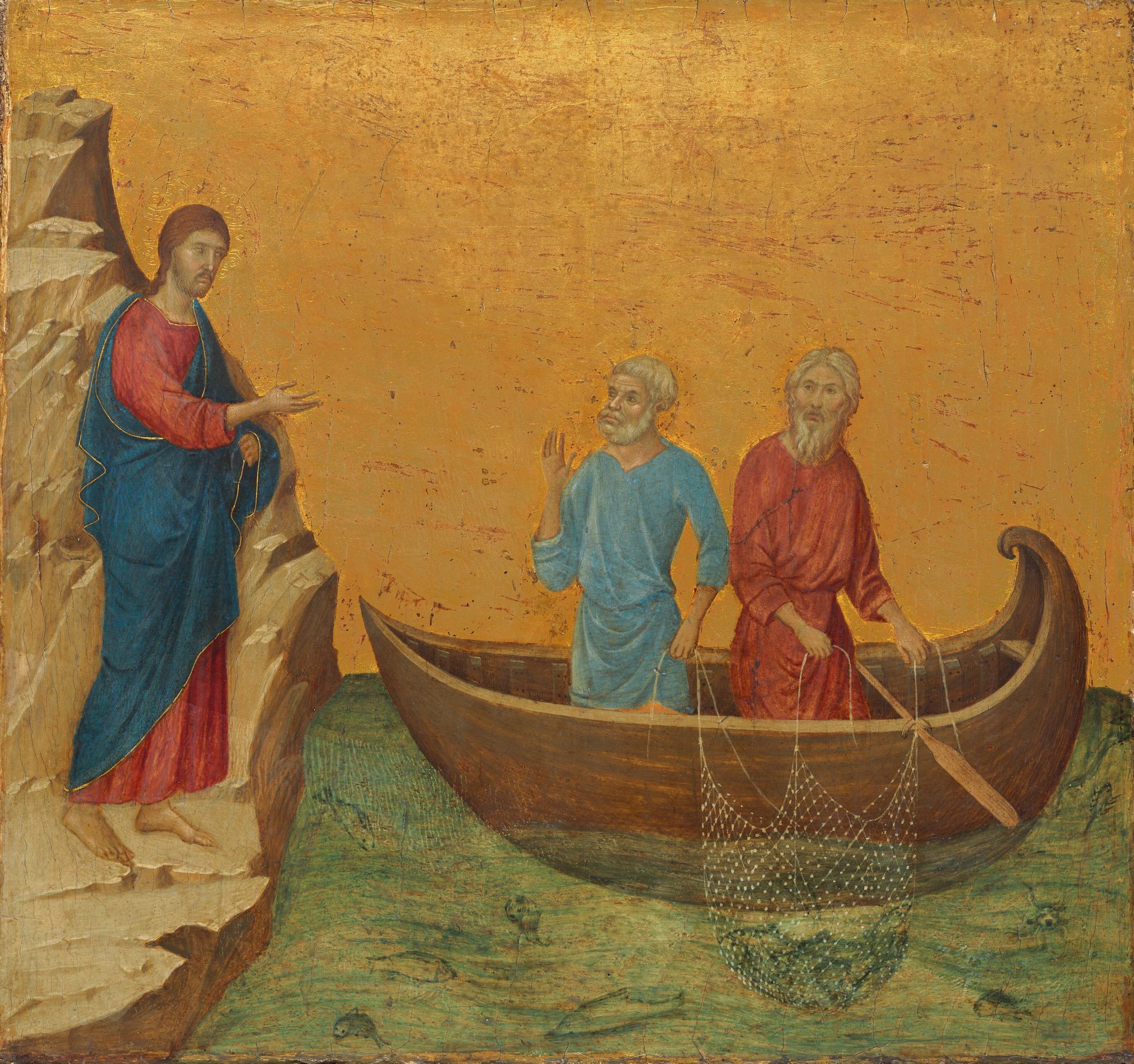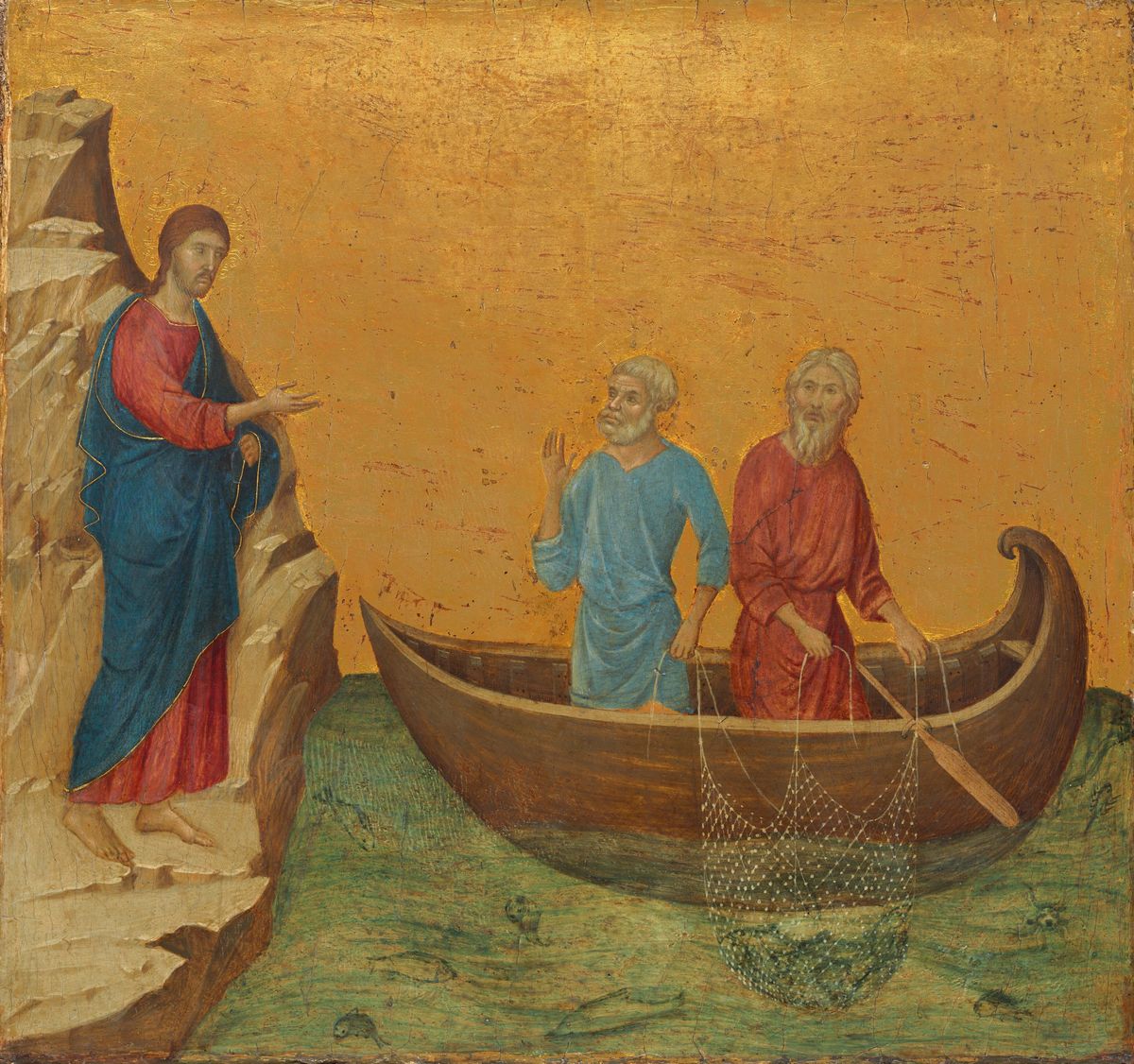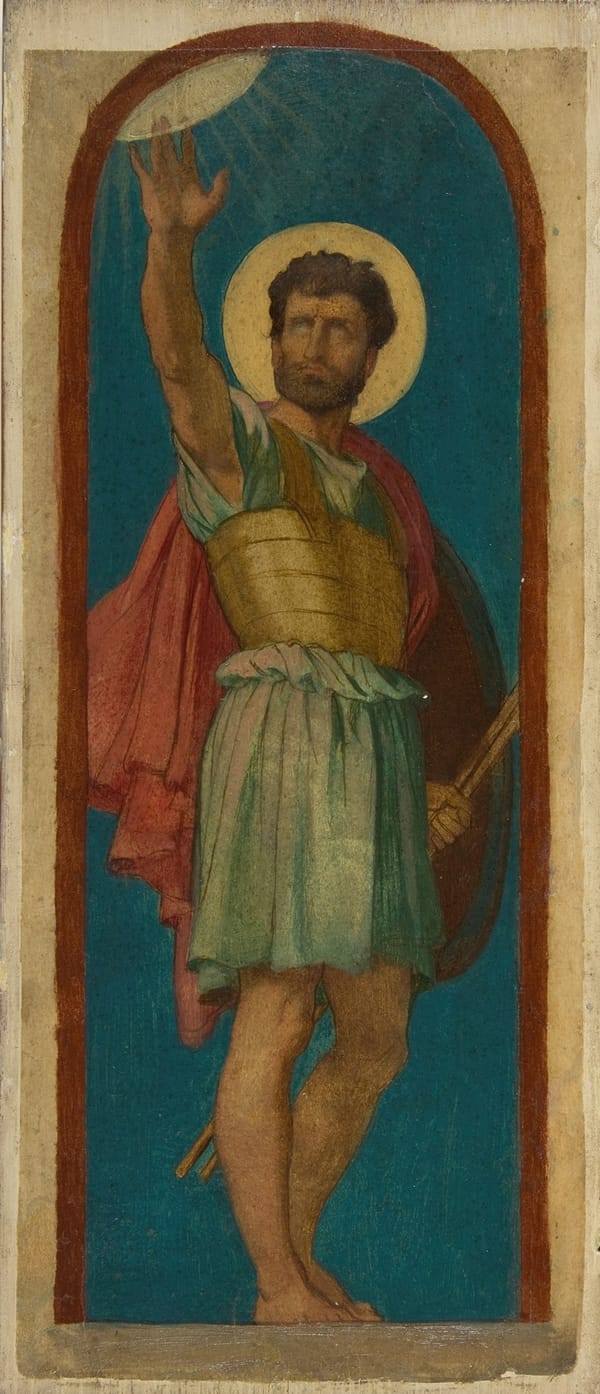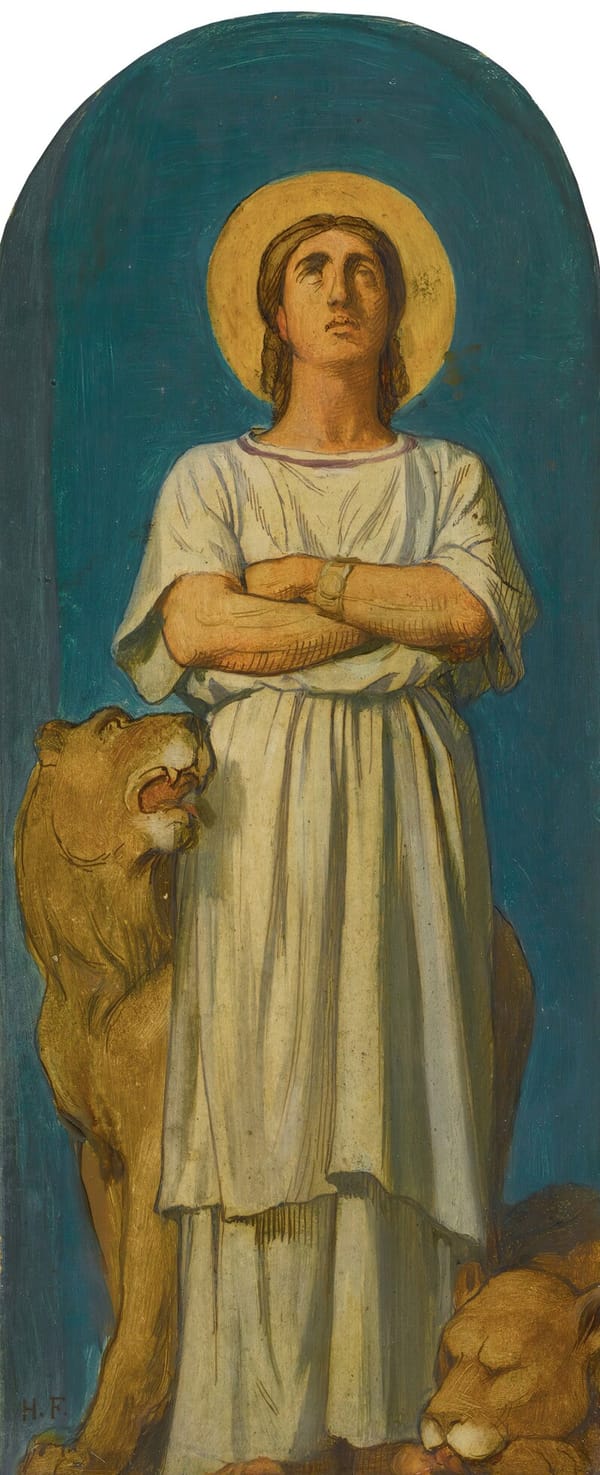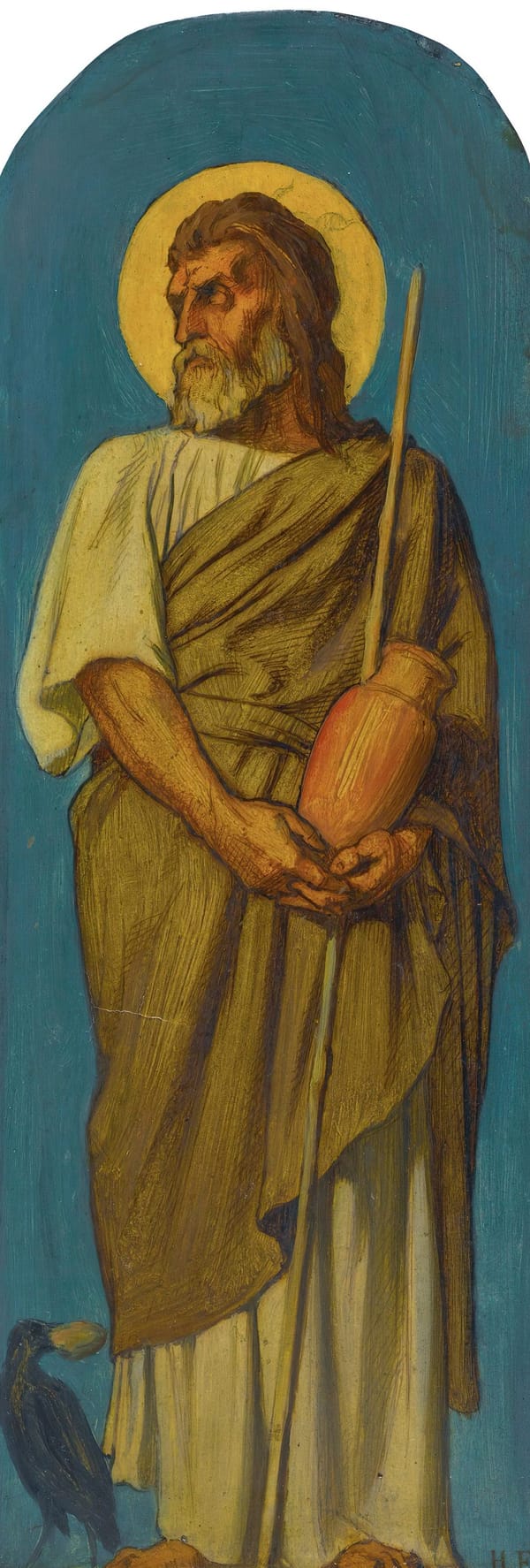Like Duccio’s The Nativity with the Prophets Isaiah and Ezekiel, this small panel was part of the Maestà, one of the most important masterpieces in the history of Western painting. The monumental Maestà was a two-sided altarpiece that dominated the main altar in Siena’s cathedral for nearly two centuries. Within the vast black-and-white striped interior of the church, it would have glittered in the colored light that washed down through stained glass. Completed in less than three years, the Maestà was a huge undertaking, for which Duccio received 3,000 gold florins—more than any artist had ever commanded. Although he must have had substantial help from his pupils and workshop assistants, the design and execution indicates that Duccio exercised control over the whole project. Moved to a side altar in 1506, the altarpiece was sawn apart in the 1770s and individual panels subsequently dispersed. This makes it impossible to determine its dimensions with certainty, but it must have been about 15 feet wide, with the gables rising to as much as 17 feet high. In all, there were probably more than 70 individual scenes (see Reconstructions).
This panel was located on the back of the altarpiece, where the imagery was devoted to Christ’s Passion and his mission as teacher—apt subjects for the rear panels, which would have been seen only by clergy standing behind the altar. Here we find Jesus calling his first disciples. He approaches two fishermen at work on the Sea of Galilee: Simon, called Peter, and his brother Andrew. Their net is full when Jesus says to them: “Follow me, and I will make you fishers of men” (Matthew 4:18).
Free Downloads Below
Hi-Res
1200px
800px
